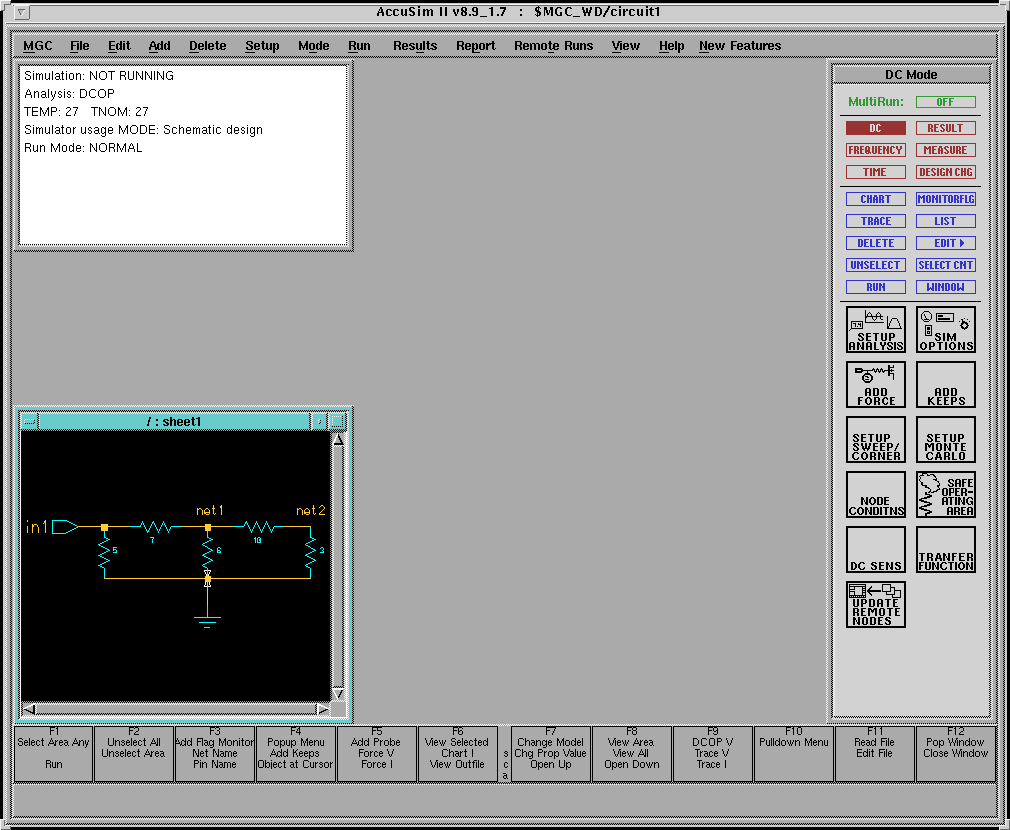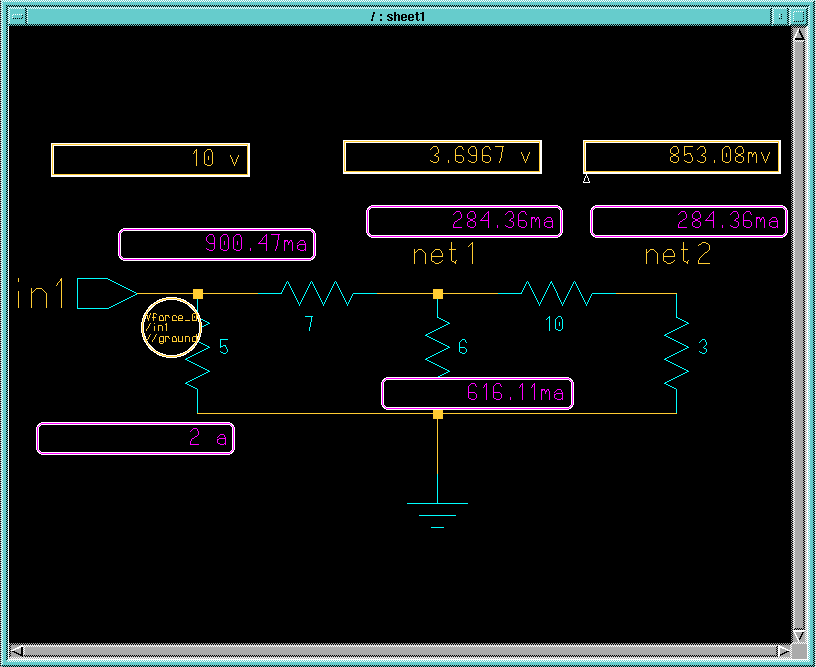1.2 Start the Design Architect tool (DA) to construct the schematic of the circuit:
>> run_en2k da
A new DA window should appear:

Note that when the tutorial refers to a "palette", it means the area to the right that is currently labeled session_palette. Also, when the term "menu item" is used, it refers to the menus at the top of theDA window.
1.3 Create a new component for the design called circuit1. Click on
the ![]() button
in the session_palette to bring up the Open Sheet dialog
box. Place the cursor at the end of the Component Name item
and click the left mouse button (LMB). Type "/circuit1" without moving
the cursor from that box. The result should be an Open Sheet dialog
box like the one below:
button
in the session_palette to bring up the Open Sheet dialog
box. Place the cursor at the end of the Component Name item
and click the left mouse button (LMB). Type "/circuit1" without moving
the cursor from that box. The result should be an Open Sheet dialog
box like the one below:

If you make a mistake typing, use the backspace key, not thedelete key to erase the incorrect characters. In the Mentor tools, the delete key will erase all of the highlighted characters, so you must be careful to not press the delete key unintentionally. If this happens, it is easiest to simply click the Cancel button and open the dialog box again.
When creating a new component in the Mentor tools, DO NOT CHANGE THE SHEET NAME FROM THE DEFAULTsheet1. Changing the Sheetname has some undesirable consequences for novice users, so it is best to leave it as sheet1.
When the Open Sheet dialog box looks like the one above, click OK. A new schematic window labeled circuit1 like the one below should appear:
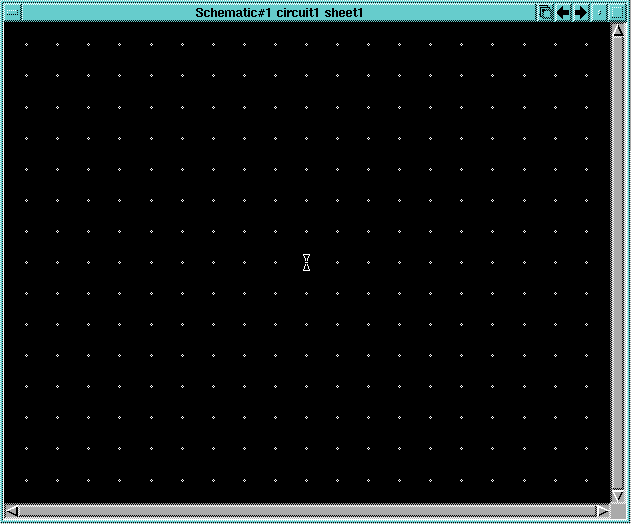
1.4 Use the Libraries->MGC Analog Libraries item to bring up the MGC Analog Libraries palette. Click on the Generic Parts item in the palette and then on the RESIST item. When you do this, a version of the resistor symbol will appear in the active component window above the palette. A ghost image of the resistor will appear in the schematic window when you move the cursor over it as shown below.
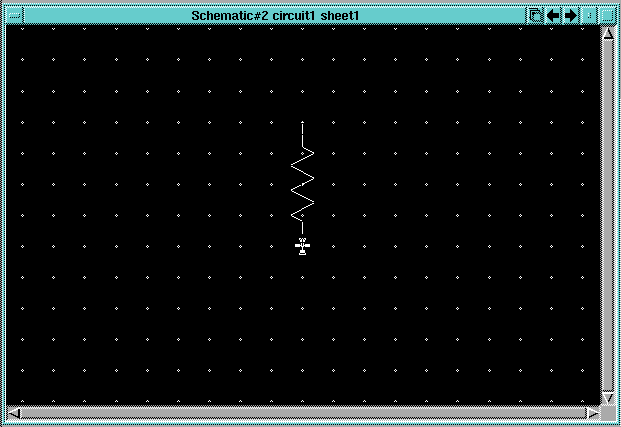
Place the cursor near the left side of the schematic window and click the LMB. This will place the resistor component in the schematic window.
1.5 Click on the RESIST-H symbol and place a horizontal resistor next to the one you previously placed. Alternate between placing the two types of resistor until you have a schematic like the one below:
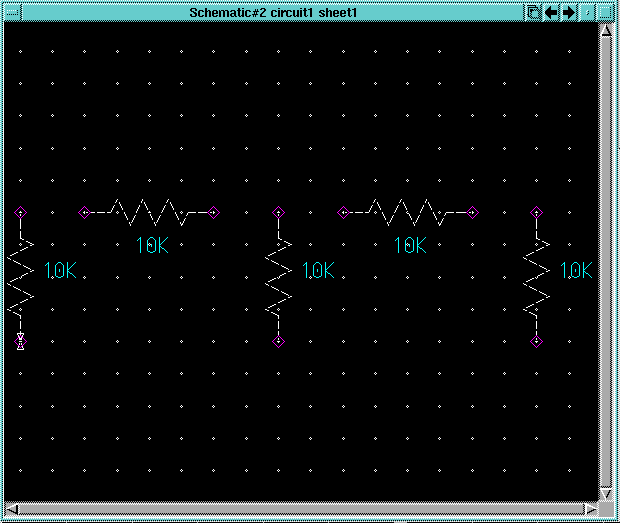
Note that you may have to use the View->Zoom Out menu item to give you more area to place the components and the View->All menu item to zoom back in to see the same view as above.
1.6 Place a PORTIN component to the left of the resistor network and a GROUND component under the resistor network like this:

1.7 Place the cursor in the schematic window and click and hold the right mouse button (RMB). This will cause a pop-up menu to appear. These pop-up menus are context sensitive in that they change based on which type of component in the schematic is selected (highlighted in white). Move the cursor down over the Unselect item and move the cursor to the right. A cascading menu will appear. Move the cursor over the Allitem and release the RMB. All of the components in the schematic will be unselected. You can also unselect all components by pressing the F2key on the top row of the keyboard. The Mentor tools frequently give you multiple ways to perform common actions like this.
1.8 Place the cursor in the palette area and press the RMB. Select the
Display Schematic Palette item and release the RMB. The schematic_add_route
palette will appear. Press the ![]() button. A small Add Wire dialog box will
appear at the bottom of the DA window and the cursor will
change to a cross hair within the schematic window. Place the cursor over
the pin of the PORTINcomponent and click the LMB. Move the cursor
to the top pin of the resistor to the right and single click the LMB. Move
the cursor to the pin on the next resistor to the right and double click the
LMB to end the wire. The result should be a single wire like this:
button. A small Add Wire dialog box will
appear at the bottom of the DA window and the cursor will
change to a cross hair within the schematic window. Place the cursor over
the pin of the PORTINcomponent and click the LMB. Move the cursor
to the top pin of the resistor to the right and single click the LMB. Move
the cursor to the pin on the next resistor to the right and double click the
LMB to end the wire. The result should be a single wire like this:

1.9 Add the remaining wires in a similar manner so that schematic looks like this:

Click Cancel in the Add Wire dialog box to exit the wiring mode and hit the F2 key to unselect all of the wires.
1.10 Now you will change the resistor values and name the input port. Place the cursor in the schematic window and click and hold the RMB. Move to the Select Area->Property item and release the RMB. Use the LMB to draw a box around the word NET on the schematic. Use the RMB again to bring up the pop-up menu and select the Change Values: item. In the small dialog box that appears, place the cursor in the New Value item and type "in1". Click OK in the dialog box.
You could have performed the same action without going through all of the above steps by simply placing the cursor over the word NET and hitting the shift key and the F7 key simultaneously. This would have selected the property and brought up the dialog box.
1.11 Use one of the above mechanisms to change the resistor values to the values shown below:
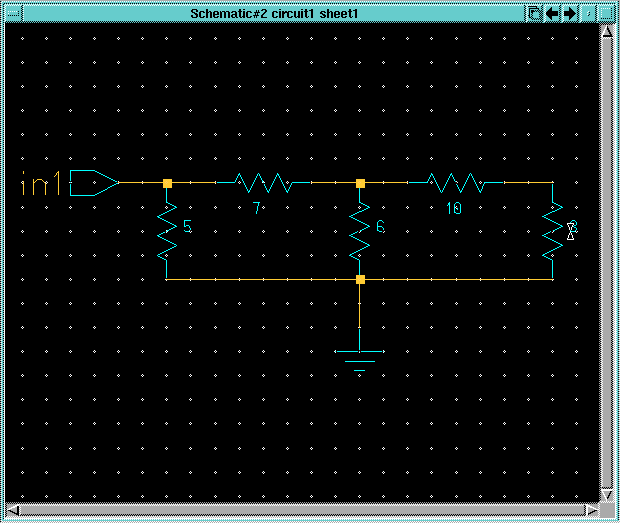
1.12 Now you will name the nets in the schematic so that they are easier to identify in the simulation. This is not strictly necessary, especially in a small schematic like the one you are building, but it is a good habit that will help debug complex designs. Place the cursor right on top of the place where the wires cross in the middle of the circuit - above the 6 ohm resistor - and click the LMB. This should result in only the crossing point (the vertex as its called) being selected. Use the RMB to bring up the pop-up menu and select the Name Nets: item. Place the cursor in the Property Value item in the dialog box that comes up and type "net1" and hit Return. Move cursor into the schematic window and you will see a ghost image of the "net1" name following it. Place the cursor above the selected vertex and click the LMB to place the name.
Use the same mechanism to assign the name "net2" to the wire between the 10 ohm and 3 ohm resistor. Note that the wire attached to the PORTIN already has the name "in1" from the PORTIN and the one remaining net does not really need a name because it is connected to the ground component and will be called GND in the simulation.
1.13 Use the Check->Sheet menu item to check the sheet. The Checkwindow that come up should say "circuit1/schematic/sheet1" passed check : 0 Errors, 0 Warnings at the bottom. Close the Check window.
1.14 Use the File->Save Sheet menu item to save the schematic
sheet and then close the schematic window and close DA.
